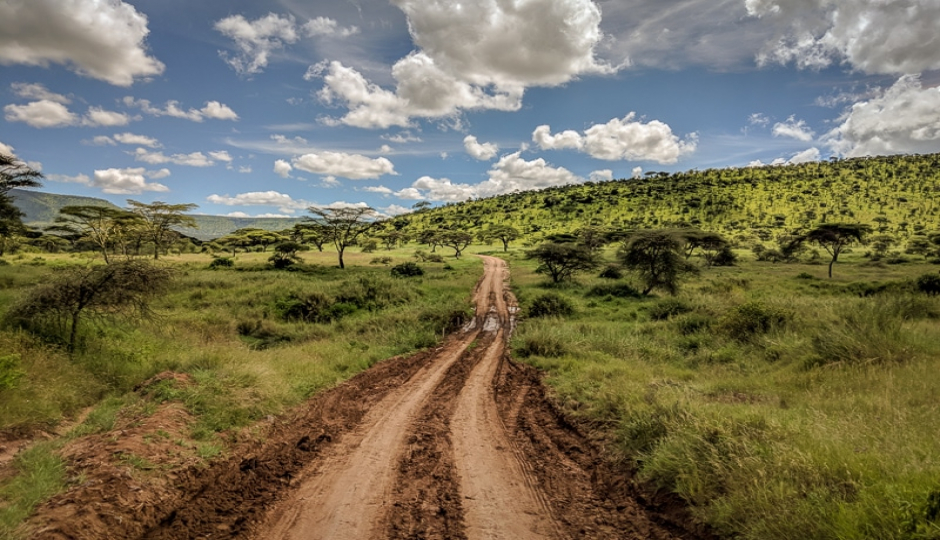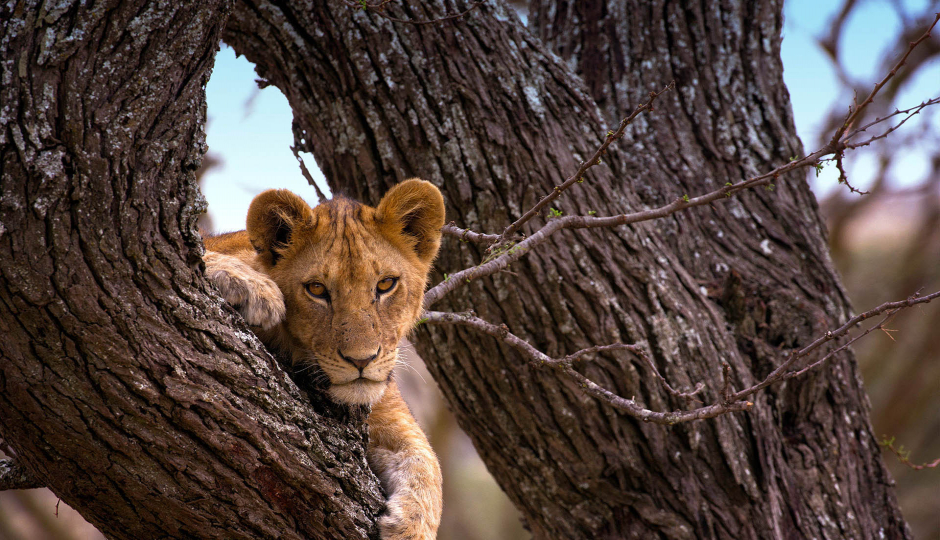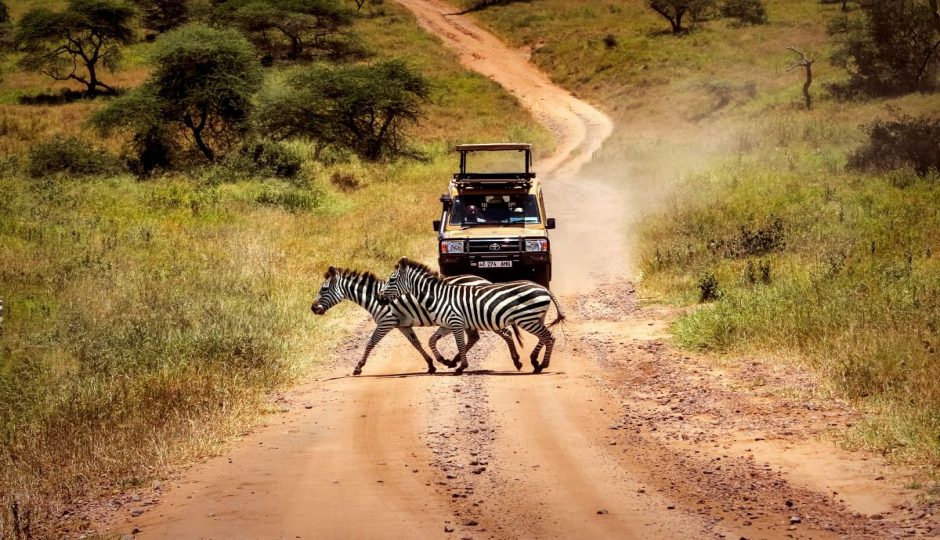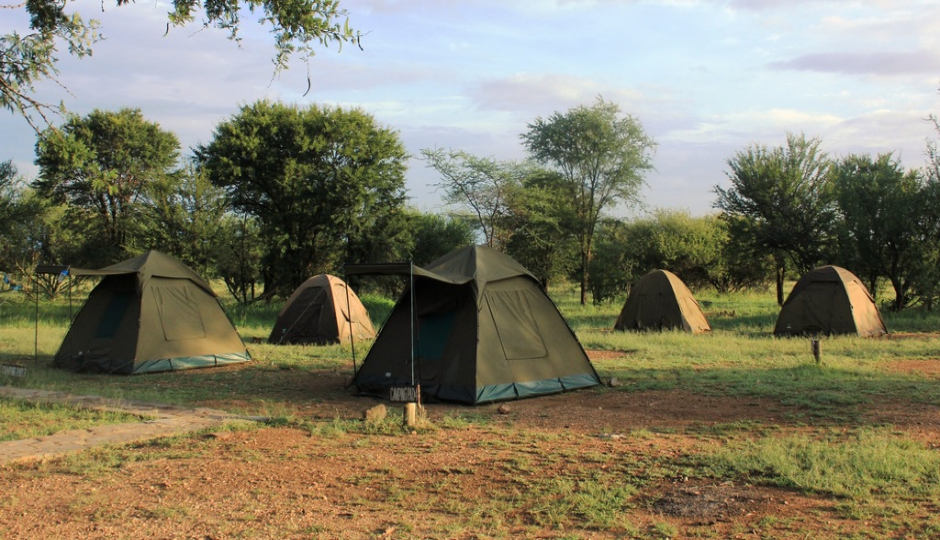







SAFARI
In Swahili, Safari simply means “Journey” today the word is synonymous with the thrill of seeing Africa’s great wildlife.
Images of the grand hunting safari, complete with an entourage of porters, still abound in Tanzania, immortalized by adventures of glamorous big game hunters such as Ernest Hemingway. Today, it is photographic rather than hunting safaris that form the mainstay of Tanzania tourism, but the origins of both may be found in far more ancient interactions between humans and wildlife.
FOOD OR COMMERCE?
It was probably man’s urge to hunt that led to the very first development of tools, from scrapers used to skin an animal to arrowheads for shooting them. Some of the early rock-art sites scattered around Tanzania depict men hunting. A few groups of nomadic hunter-gatherers still exist around the margins of Tanzania’s Lake Eyasi, southwest of Ngorongoro. Retaining an intimate knowledge of the environment and hunting terrain, the nomadic Hadza use different plant poisons to lethal effect on their poison arrows and employ agility and cunning in the hunt.
They are skilled trackers, reading game trails like a map, but will also use certain trees as a lookout point. At times they will even imitate an animal as a part of the chase, for example, donning a headdress of impala horns when stalking an Impala.
Other tribal groups, such as the pastoralist Maasai, have co-existed in harmony with the wildlife over years, referring to them as their second cattle, and only resorting to hunting for food in times of severe hardship. Yet traditionally, a Maasai moran [warrior] had to kill a lion as a part of the ritual to attain manhood and status, although this is no longer a prerequisite.
The Ivory trade stretches back to the days of ancient Rome. Arab caravans were certainly operating since the 7th Century. By the time the British arrived, the slaughter of elephants for their ivory had become part of a sophisticated trading network, with the ivory transported en route.
The Arabs supplied guns to the African hunters, and it is estimated that 30,000 elephants were being killed a year in Kenya, Uganda, and Tanzania in the 1850s. By the 1880s, this had risen to between 60,000 and 70,000.
TROPHY HUNTING
The advent of trophy hunting started with the Victorian big-game hunters, who moved up from southern Africa where much of the game had been decimated, lured by the big tuskers and large herds of East Africa.
In 1902, Frederick Courteney Selous made his first expedition to east Africa. In 1909, he returned to set up a hunting expedition for the American President, Theodore Roosevelt. “Today, wildlife areas - National Parks, National Reserves, Game Controlled Areas and Wildlife Management Areas - account for a Massive 25 percent of Tanzania.”
The scale of this safari, to collect specimens for the Smithsonian and American Museum of Natural History in New York, took on epic proportions, and covered a nine-month period and four countries.
The attendant press entourage gave international publicity to African Safaris, initiating the beginning of the commercial hunting safari in Africa. Meanwhile, Selous himself made the transition from hunter to safari guide, and began, through his writings, to influence world opinion on the need to conserve wildlife.
GREAT WHITE HUNTER
The commercial hunting safari was thus established. For the most part, the professional hunters were men who appreciate the wildlife, reveled in the excitement of the bush, and simply took hunting clients to earn a living. Unfortunately, they were often too efficient. The pioneering pilot, Beryl Markham, tells of watching the Elephants gather around the big tuskers to hide them from her spotter plane.
Meanwhile, these romantically rugged figures became further glamorized and embellished by movies like King Solomon’s Mines, filmed in the 1950s, the writings of hunting fanatic Earnest Hemingway, and the filming of the Snows of Kilimanjaro, also in the 1950s. White hunters became enveloped in the mantle of Hollywood.
Selous was by no means the only hunter to become an ardent conservationist. Another was Constantine Lonides, more renowned for his passion for snakes, who gives an interesting account of the early hunting days in his autobiography. A Hunter Story. Drawn to Tanzania by a passion for hunting, he joined the 6th King’s African Rifles, arriving in 1925.
After a short spell in the army, he turned to hunting and poaching elephants, where he was not averse to bringing chiefs and officials when in pursuit of big ivory. Leonides then worked as a white hunter, taking hunting safaris, where the emphasis was on tracking the game and finding suitable specimen trophies for the client, without the frills of drinks on ice and gourmet cuisine. He aptly described the development of the role of the white hunter today as combining the social skills of a traveling hotel manager with those of a hunter.
From the 1920s onwards, the land had been set aside for game parks and reserves. Leonides joined the Game Department in 1933; at that time, six European game rangers and around 120 African scouts were responsible for the entire country. Their remit was to conserve the game, protect human life and property from attacks by wildlife, and control hunting. Apart from a seven-year period from 1973 when a complete moratorium was imposed, the hunting safari has been a highly profitable industry for Tanzania. Licensed hunting began in 1984 when the government issued 10 hunting concessions through the Tanzania Wildlife Corporation (TAWICO), which was subsequently privatized.
The Game Department is the government arm responsible for controlling hunting, issuing hunting concessions, and regulating game quotas. The industry strives to maintain high ethical standards, although its very existence remains controversial.
In the words operators: We are committed to maintaining a long tradition of ethical hunting, and not merely providing the opportunity for the indiscriminate killing of the animals.
The annual hunting season runs from 1 July to 31 December. Restrictions on certain species are laid down by the international monitoring agency, the Convention on International Trade in Endangered Species (CITES). Hunting is a big business overseas clients hunting buffalo, elephants, lions, and leopards pay thousands of dollars for the privilege. The government gains more than US$20 million a year in trophy fees and other associated fees. Additional money is paid to local communities, and there are significant tips for the trackers.
PHOTOGRAPHIC SAFARIS
The development of the photographic safari derived from the hunting safaris, replacing the gun with the camera and attracting an increasing number of tourists on different budgets. The big five of the photographic safari are still those that were the prime hunting trophies in the past - elephant, lion, leopard, buffalo, and rhino - though this list is supplemented by other charismatic creatures such as cheetahs, giraffe, African hunting dogs, and zebra.
While some companies retain the classic style of the traditional mobile camp complete with gourmet catering, others operate a less lavish set-up, with basic camping facilities. Increasingly, new types of permanent and sophisticated accommodation have appeared, from the permanent tented camp to lodges and opulent hotels decked out in 1930s themes.




How Do I Plan a Kilimanjaro Climb?
How Much Does a Tanzania Safari Trip Cost?
Is It Worth Going on a 1-Day Tanzania Safari?
To book your adventure, simply send us an email detailing your desired experience—whether it's climbing Mount Kilimanjaro, going on a Tanzania safari, or enjoying the Zanzibar beach.
We'll promptly respond with all the information you need to finalize your plans. Plus, we offer the convenience of online payment to make the process even smoother.
View Packages